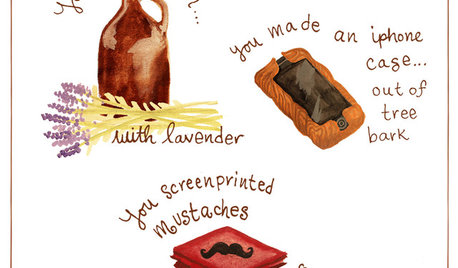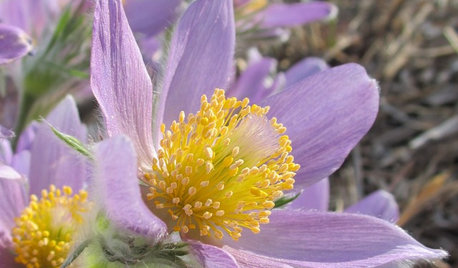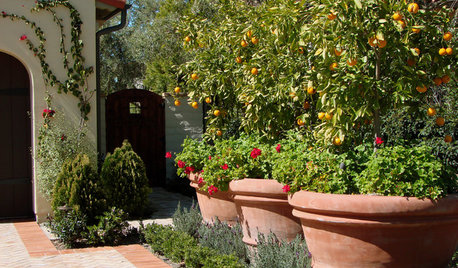If you've planted confiers...
whaas_5a
12 years ago
Related Stories

CONTAINER GARDENSPatio-Perfect Berry Bushes Like You’ve Never Seen
Small enough for pots but offering abundant fruit, these remarkable bred berries are a boon for gardeners short on space
Full Story
DECORATING GUIDESThe Dumbest Decorating Decisions I’ve Ever Made
Caution: Do not try these at home
Full Story
FEEL-GOOD HOME12 Very Useful Things I've Learned From Designers
These simple ideas can make life at home more efficient and enjoyable
Full Story
DECORATING GUIDESRadiator Covers Like You’ve Never Seen
From custom to DIY, these 10 ideas will help the radiator blend in, become a storage standout or both
Full Story
SMALL HOMES16 Smart Ideas for Small Homes From People Who’ve Been There
Got less than 1,000 square feet to work with? These design-savvy homeowners have ideas for you
Full Story
DIY PROJECTS12 Signs You've Caught the DIY Bug
Been making inventive things from scratch? Repurposing salvaged pieces creatively? It may be more serious than you think
Full Story
GARDENING FOR BUTTERFLIESGreat Native Plant: Pasque Flower
Get ahead with this early-blooming perennial, which has an unusual feature you've got to feel for yourself
Full Story
GARDENING FOR BUTTERFLIESGreat Design Plant: Ceanothus
Try these springtime stars for a bolt of blue, especially where you've got a dry spot in the garden
Full Story
GARDENING GUIDES8 Plants That Snobs Love to Hate — and You'll Love to Grow
Don't dismiss these common annuals, perennials and shrubs — there are reasons they've been popular for so long
Full Story
GARDENING GUIDESPick the Right Plant Pot to Flatter Your Landscape
To play matchmaker for your container garden and its surroundings, you've got to know all the materials and pick the right style
Full StoryMore Discussions








dcsteg
wisconsitom
Related Professionals
Derry Landscape Architects & Landscape Designers · Brooklyn Center Landscape Architects & Landscape Designers · Mooresville Landscape Contractors · Berkley Landscape Contractors · Burlington Landscape Contractors · Cockeysville Landscape Contractors · Davidson Landscape Contractors · Hicksville Landscape Contractors · Hilo Landscape Contractors · Lyndhurst Landscape Contractors · Northbridge Landscape Contractors · Paterson Landscape Contractors · Thornton Landscape Contractors · Wareham Landscape Contractors · Yukon Landscape Contractorstsugajunkie z5 SE WI ♱
Toronado3800 Zone 6 St Louis
Toronado3800 Zone 6 St Louis
scotjute Z8
whaas_5aOriginal Author
dcsteg
whaas_5aOriginal Author
dcsteg